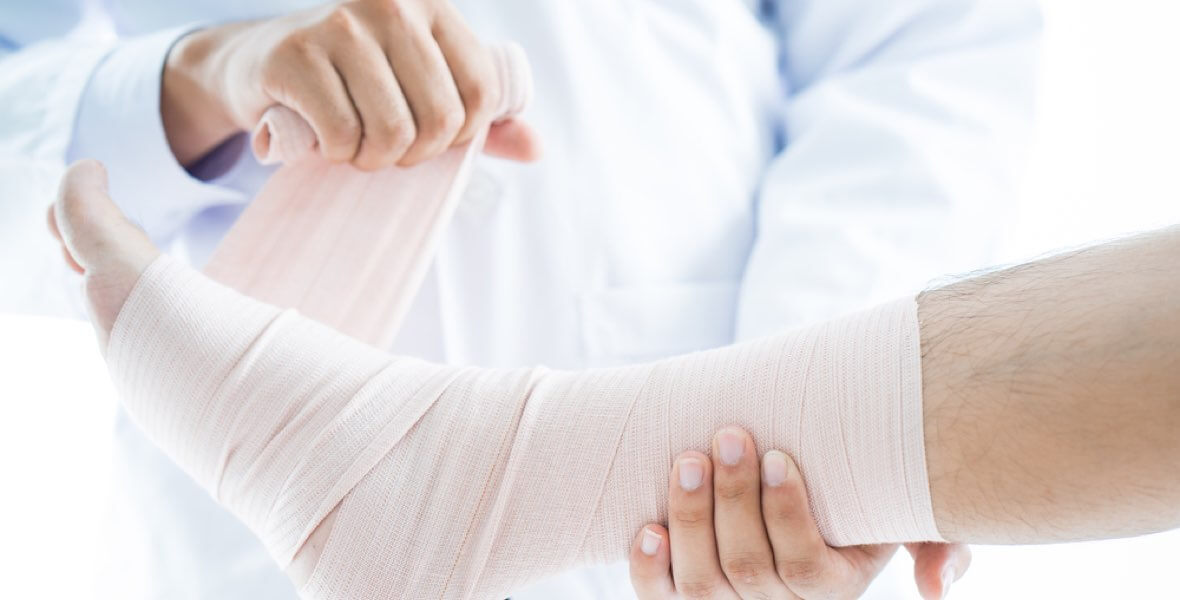Pain is a frequent problem encountered in patients with chronic wounds. According to an estimate, around 48% to 81% of patients with chronic wounds experience pain. Patients describe the pain as the most debilitating and distressing feature of living with chronic wounds and has been linked to a reduced quality of life. The degree of pain associated with chronic wounds depends on the underlying etiology, type of wound, and the patient's subjective experience.
The resulting inflammation resulting from wound infection is a significant contributor to wound pain. Therefore, wound care specialists and podiatrists should focus on the holistic management of wound infection and pain for better patient outcomes. This article describes the various causes of wound pain, and effective pain management strategies that clinicians should consider when treating patients with chronic wounds.
What Causes Pain In Chronic Wounds?
Pain is a common symptom in patients with chronic wounds. Certain wound types such as ischemic ulcers tend to be more painful compared to other types. The pain in chronic wounds arises from either tissue damage (nociceptive pain) or irritation of nerve endings (neuropathic pain). In general, neuropathic pain tends to be more severe compared to nociceptive pain. However, patients with chronic wounds may have elements of both.
There are several identifiable causes of pain in chronic wounds. Some of these include:
- Wound infection
- Dressing changes, debridement, or other topical treatments
- Edema, ischemia, or other local pathology at the wound site
- Psychological factors
Wound pain can be described as falling into one of the following categories:
- Background pain - it is a continuous, intermittent pain felt even during rest
- Incidental pain - it occurs during activities of daily living such as walking or coughing
- Procedural pain - this type of pain occurs during routine wound care procedures by the healthcare staff such as during dressing changes or cleansing
- Operative pain - occurs during interventional procedures such as debridement or biopsy
How Does Inflammation Contribute to Pain In Chronic Wounds?
Chronic wounds are characterized by prolonged and protracted inflammation. Even though inflammation is a normal physiological response to tissue injury, excessive inflammation at the wound site can delay wound healing. Wound infection is a leading cause of prolonged inflammation at the wound site.
The presence of microorganisms in the wounds elicits an immune response which triggers an inflammatory cascade at the wound site. The release of inflammatory mediators and other enzymes results in local tissue destruction. Therefore, wound inflammation can contribute to pain either through local tissue damage, stimulation of peripheral nerve endings by the inflammatory mediators, or local edema.
The excess levels of exudate produced in an infected wound can also contribute to a heightened sense of pain. In addition, the matrix metalloproteinases (MMPs) and free radicals present in the chronic wound exudate negatively impact wound healing. Therefore, it is imperative for wound care specialists and podiatrists to effectively manage wound inflammation for better healing outcomes.
How To Manage Pain and Inflammation In Chronic Wounds?
It is essential for clinicians to regularly assess the patient's pain levels using pain measurement tools. Several validated questionnaires can help patients communicate their pain levels more effectively to their healthcare providers. One such scale is the visual analog scale (VAS) which indicates the severity of the pain. Knowing the patient's pain levels can help clinicians tailor the treatment and analgesic accordingly.
There are two components to pain and inflammation management in wound care. These include:
- Treatment of wound infection
- Management of the wound pain
Management of Wound Inflammation
Wound infection is a significant contributor to wound inflammation and subsequent wound pain. Therefore, early identification and management of wound infection is an important component of wound care. Managing wound inflammation can also help limit wound pain.
The presence of wound infection warrants the use of antimicrobial agents. These include antibiotics or antiseptics that can inhibit or destroy pathogenic organisms. Given the rise of antibiotic-resistant organisms, there has been an increasing trend toward the use of alternative antimicrobials agents such as silver, iodine, or polyhexamethylene biguanide. For localized infections, topical antimicrobial agents might be sufficient. However, there might be a need for systemic antibiotic therapy in the presence of widespread infection.
Management of Pain
Assessing the patient's pain levels before, during, and after dressing changes can help clinicians to modify the treatment plan accordingly. Pain management involves both pharmacological and non-pharmacological treatment options that are described below:
- Use of analgesia: The analgesia selection should be done after assessing the patient's pain levels using validated questionnaires. A useful model that helps in the prescription of analgesics is the WHO's pain ladder. It involves a stepwise progression in the intensity of pain medication used depending on the severity of the patient's symptoms. Patients with mild pain are only prescribed NSAIDs (nonsteroidal anti-inflammatory drugs) while opioids might be needed for patients with persistent, severe pain.
- Dressing changes: Patients report considerable pain during dressing changes. Patient discomfort can be minimized by careful removal of dressing, and selection of appropriate dressing material. Some dressing materials cause more pain and discomfort than others. Therefore, it is important for clinicians to carefully assess the characteristics of individual wound dressings before prescribing them.
Non-pharmacological treatments: Given the psychological component of pain, patients might also benefit from non-pharmacological treatments. These include relaxation therapy, biofeedback, music therapy, and other psychosocial treatment options that can alter the patient's perception of pain. These treatments can also help to improve patients' quality of life through improved mental health.



.webp)

.avif)